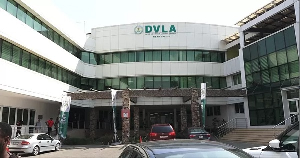There are many reasons why health agencies are turning to Geographic Information Systems (GIS) applications, but research application is at the top of it all.
The fact that this discipline involves a lot of research and data analysis means that GIS can be very helpful to a greater extent. It is usually pragmatic in research, disease control, planning, monitoring and evaluation.
This write up examines all the applications of GIS in the Health Industry, which is also known as Health GIS. We are here to examine how GIS is used and how the privacy of sensitive medical data is maintained with this technological and scientific tool.
Mapping and Visualization
This is the first and most influential use of GIS in public health. It helps in providing a visual representation of medical data. According to findings, more than 80% of the data collected has a geographical significance and that’s why GIS is imperative along the way to map this data.
Data Management
In health, data managers and administrators have the responsibility to maintain authoritative records of patients and disease trends. Health records are inherently spatial in nature, since information on where the person stays, plays a big role in aiding medical research.
GIS provides a robust data management system that connects several records into relationships and binds these relations to the location of the patient in question. With this system in place, researchers can easily extract key insights on how a patient’s surrounding affects his/her health.
Field Mobility
GIS empowers health agencies with the ability to remotely collate information and feed these findings to a central endpoint for further analysis and visualization. Spatially enabled digital survey forms can be configured and used to run research.
Monitoring
GIS provides a platform to not only store and aggregate medical records, but also monitor the trends of diseases and how they spread. This has been a very effective way to track the current COVID-19 pandemic, which has equipped health agencies with an upper edge to understand how COVID spreads. The end result for the use of locational data is to enable the health institution make optimal decisions with greater profitability.
Some useful cases of GIS intervention in COVID-19
There are lots of examples to use here but we will focus on two: John Hopkins University and the Ghana Health Service hereafter referred to as JHU and GHS respectively.
John Hopkins University ArcGIS Dashboard.
Johns Hopkins University (JHU) created a dashboard using Esri technology with transparent data sources. It immediately went viral, with the number of visitors skyrocketing as it became the global reference for the pandemic, while Esri continued assisting with support.
The dashboard is structured into several small panels with an emphasis on Total confirmed cases (Total Confirmed), total confirmed deaths (Total Deaths), Total recovered patients (Total Recovered), Cases confirmed by Country or Province, data from the last update. It has since evolved to include the total recovery, graphs on a logarithmic scale and another of the daily increment (new confirmations versus new recoveries). It is thus making the evolution and consequent regression of new cases clearer.
The dashboard communicates with other websites and web pages to update its data. Some of the sources of data to JHU are WHO (World Health Organization), CDC in the USA, CDC in China, ECDC (European Center for Disease Prevention and Control), NHC, and DXY (a Chinese website that aggregates situation reports in near real-time).
Ghana Health Service GIS Response
The government of Ghana was quick to adopt GIS solutions in dealing and managing Covid-19. This intervention has been very useful and successful as Ghana has recorded one of the highest recovery rates and low spread rates due to immerse contact tracing and data-driven decision-making.
The GHS uses a vibrant data collection (Covid-19 cases) to build a database which is then analyzed and used for making policies and decisions. The data collection process has been possible using an imbedded data collector application called Survey123. The survey application provides the platform for users to collect spatially enabled data using mobile phones and/or laptop.
This dashboard has been created to focus on the specific needs of the country Ghana. It displays vital information on the total number of cases, number of cases within a specific region or district, time series of cases, the pattern of spread and underlining causes of the major deaths. The dashboard was created with the responses from the Survey123 forms, which returns in a form of a web layer on the ArcGIS Online platform. As a result, the dashboard automatically updates during a specific interval to give up-to-date information.
Benefits of the Dashboards
· Origin and Spread of the virus: The work at JHU has played an important role in tracking the virus from its origin and as it spreads, the world has been enlightened on virus’ relationships, patterns, and associations that are often hidden by the complexity of large raw data.
· Public awareness: The dashboard receives more than a billion interactions a day - a number that includes both people visualizing the map and those who are mining the underlying data for other useful purposes. It has allowed policymakers, the media, and the public to find specific, up-to-date information about the outbreak and how it is affecting communities across the nation in near real-time.
· Allocation of Ad hoc health facilities for hotspots: While the fight against the virus become difficult with the spread getting out of control, the dashboard identified hotspot regions (areas with the highest cases) and this helped officials to build emergency health structures to attend to the growing demand for healthcare.
· Informed decision making: Governments and health professionals are now able to understand the data and then make informed decisions such as total or partial lockdowns at where and when. Having this kind of granular data and contextual information going forward will help public health officials and governments make data-informed decisions about whether additional resources are needed or, in the future, whether social distancing measures need to change.
The writer is the Head of Professional Services and Technical Support at Sambus Geospatial Limited
Health News of Tuesday, 15 September 2020
Source: GNA













